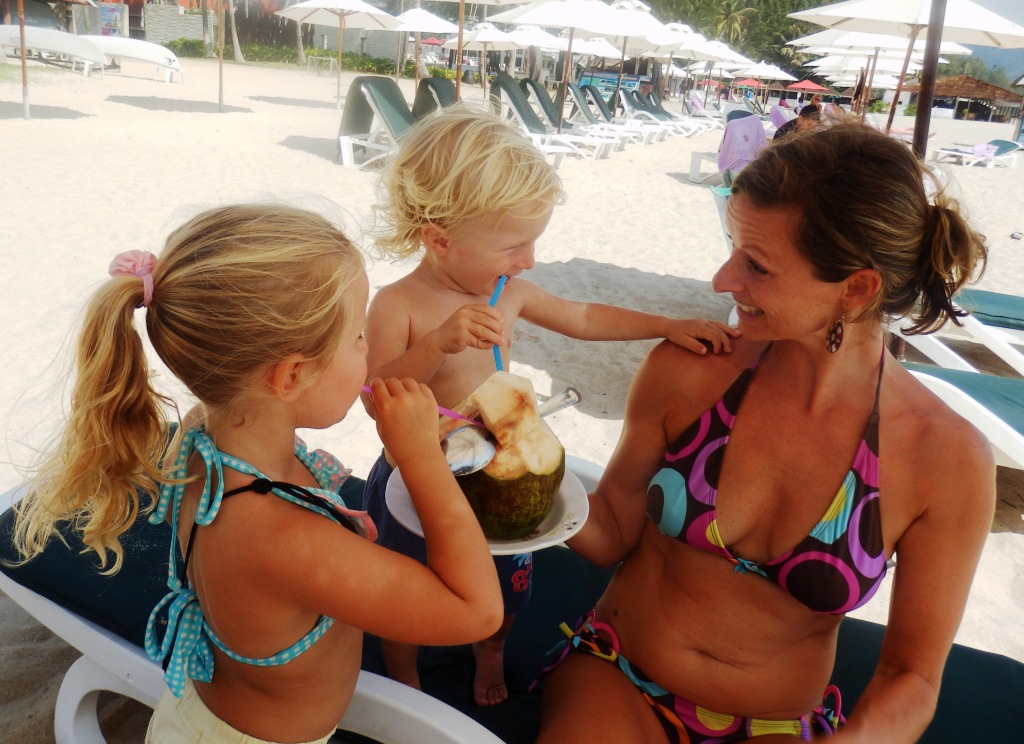Raw Food For Kids Part 3 – Nutrients to Watch
Another common question I receive from parents raising their kids on raw foods is:
What nutrients shall I watch on raw food lifestyle?
Raw food lifestyle is extremely rich on most of the nutrients so you shouldn’t be worried too much or counting calories or % of recommended daily intakes (RDI). If you can ensure your kids consume leafy greens on a daily basis and eat well balanced raw foods then they should be just fine.
However, as a parent you need to bear in mind that your raw food kid might get deficient as on any other diet. There is no need to be obsessed and you don’t fail if your kid is not 100% raw vegan! Please, be gentle on yourself as a parent and on your child. The most important thing to remember here is that raw food lifestyle should be pleasant and fun journey rather than a struggle on a daily basis.
Here is a short list of the most important nutrients to watch on raw food diet, basic information to keep in mind and some tips how to get enough:
a) Vitamin D – the main natural source of vitamin D is sunlight and the main animal food sources are egg yolks and fish. Raw food sources of this vitamin are leafy green vegetables such as nettles and some mushrooms. You should watch your kids’ levels of vitamin D especially if you live in colder climate with limited sun light (you can become vitamin D deficient although living in Australia for instance if you use sun screen lotions all the time and don’t let your skin to be exposed to natural sun light!). Twenty minutes of sunbathing without any sun screen protection should be enough to ensure enough vitamin D. Although if you have darker skin you need to be exposed to sun a bit longer! If your body is lacking Calcium then Vitamin D cannot be synthesised that well. If you live in a country with limited sunlight you may consider supplementing your child.
b) Calcium – as mentioned above Calcium is interconnected with vitamin D. Calcium as well as vitamin D is important for bone growth and healthy teeth. Leafy green vegetables contain Calcium as well as poppy seeds, tahini, almonds, quinoa or chia seeds. Poppy milk is great source of calcium as well as chia seeds porridge with coconut or almond milk (I don’t recommend making nut milks such as cashew milk as some children and babies might be allergic or nuts sensitive).
Here is a recipe for a ‘calcium juice’ which would give your child approximately 250mg of calcium :
2 big handful parsley
2 big handful watercress
2 cups kale
1 cup broccoli
1 pineapple and mixing with coconut water to make the juice digestible for small kids as they probably won’t like the bitter taste of green juices. This juice would cover a daily calcium intake recommendation for babies up to 1 year old. You shouldn’t give your baby anything except breast milk or alternative source of milk up to the age of 6 months! From 6 months and later you can gradually introduce this juice and for older kids you can make chia seed porridge (chia seeds soaked in almond or coconut milk with mashed banana and cut fruits).
c) Vitamin B12 – if your child is raw vegan, you should be conscious about this vitamin as the main food sources of this vitamin come from dairy products such as eggs and animal products. Some algae contain B12 as well as nutritional yeast, but one shouldn’t rely on it! So if your child doesn’t eat eggs or meat than you should look at some supplements. We found the sublingual sprays most suitable and they work well. If your kids don’t like the spray action, just spray it in a cup and mix with a bit of water, coconut water or almond milk. If you don’t want to supplement, you may consider adding eggs to your child’s diet.
d) Iron – this mineral is available in haeme and non-haeme forms. Haeme form of iron is absorbed by your body easily than as non-haeme iron. Haeme iron is found in meat and non-haeme iron in plants and eggs. Now you understand why vegetarians and vegans might be at a higher risk of iron deficiency. So, how to get enough? You need to be careful here as supplementing iron (I’m not talking about natural sources of iron) might be toxic. Before you start supplementing your child, please ensure the iron deficiency by a blood test. To ensure a good absorption of iron ensure to consume foods rich in vitamin C. Here are the top raw food sources of non-haeme iron and rich in vitamin C as well: Wheatgrass, spirulina, amaranth, pistachios, pumpkin seeds, sesame seeds, quinoa, sun dried tomatoes, goji berries and more. Mix these foods as much as you can i.e chia seed porridge with goji berries for breakfast as body absorbs the most of iron in the morning. You can make wheatgrass juices or smoothies mixed with fruit and ground seeds to sprinkle them over salads or soups. If you have a little baby and still breastfeeding you shouldn’t be too worried as iron passes through breast milk. Just make sure you are not iron deficient. In case you need to supplement your child due to deficiency, I highly recommend ionic iron which is 99.9% absorbable and you can add it to your kid’s drink.
These were just the top nutrients to watch on a raw food diet and I would also watch vitamin K1 and K2 as well as omega-3 fatty acids (DHA & EPA). I have written an article on the importance of vitamin K2 here.
You can also read the part 1, part 2 of articles focused on raw food parenting here and here 🙂
